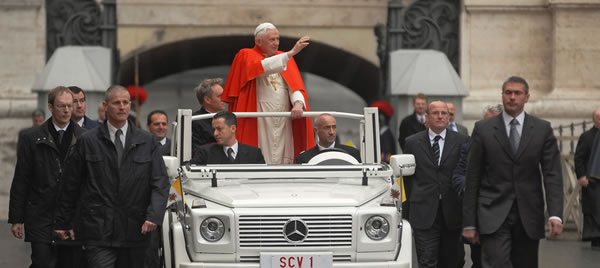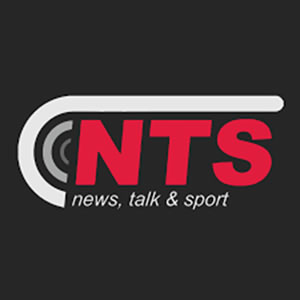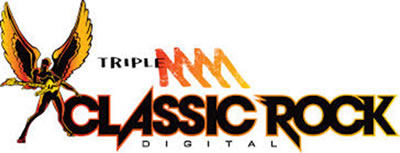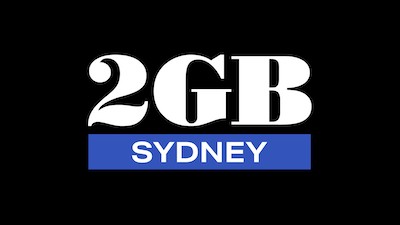The Growth of Digital Radio! (even the Popemobile has Digital Radio)

Is digital radio in Australia dead?
Not according to recent figures, in fact far from it. Digital radio is going strong and getting stronger.
The recent news that Digital radio is now reaching 3.2 million listeners in Australia, according to GfK figures released by Commercial Radio Australia (CRA), shows growth of 24% in the past year.
If that growth rate continues, digital radio listeners would exceed 10 million in Australia by 2020.
Digital radio has been growing steadily since it was introduced in Australia in 2009; and it remains early days, particularly considering digital radio was only introduced in cars in 2011. However, it is now accessible (based on geographical location) to 61% of the population.
So what is driving digital radio growth?
Aside from the obvious audio quality, with digital radio having a crisp, crystal clear sound, there are some unique offerings on digital radio; and further unique, compelling, exclusive content offerings will help drive growth of digital radio.
 The Fairfax/MRN owned NTS digital network operates in metro markets and is a good example of a unique product, offering a national network featuring news, talk and sport, highlights from Fairfax stations including UE, AW, 4BC and 6PR. And now with the Macquarie Fairfax merger you would expect it would probably also include the best of Sydney’s 2GB. So the best of all the Talk stars on one channel, nationally.
The Fairfax/MRN owned NTS digital network operates in metro markets and is a good example of a unique product, offering a national network featuring news, talk and sport, highlights from Fairfax stations including UE, AW, 4BC and 6PR. And now with the Macquarie Fairfax merger you would expect it would probably also include the best of Sydney’s 2GB. So the best of all the Talk stars on one channel, nationally.
NTS can be accessed via DAB+ radio, online and mobile app.
 Other unique digital brands include Triple M Classic Rock and The Edge. Classic Rock and Hip Hop, both being popular radio formats which are not catered for by am/fm metro music stations presently (with the exception of Western Sydney’s Edge). Considered too niche, they have found a home, and an audience, on digital radio.
Other unique digital brands include Triple M Classic Rock and The Edge. Classic Rock and Hip Hop, both being popular radio formats which are not catered for by am/fm metro music stations presently (with the exception of Western Sydney’s Edge). Considered too niche, they have found a home, and an audience, on digital radio.
Country music falls into the same category. Grant Broadcasters “KIX The Hottest Country” is now heard on a combination of Digital (in Perth & Canberra ) and regional narrowcast FM services.
Other unique offerings on digital include Koffee, Loveland, Buddha and Stardust. Some larger radio groups like Nova Entertainment and ARN have fully sponsored digital stations such as Coles Radio and Chemist Warehouse Remix; which, whilst strictly speaking are brand-funded rather than listener-focused, are still listenable to a casual flicker.
There’s even been ‘pop-up’ digital channels like ARN’s Christmas music station ‘Elf‘, and some tour-focused pop-up channels created by SCA.
The better the quality and uniqueness of the content, the stronger the growth of digital radio will be. Strong, unique content should help drive demand.
Of course much of digital radio’s listening is ‘re-broadcasts’ of existing AM/FM radio brands, and this is particularly important for the AM stations who not only have a lesser quality signal than FM; but have to compete increasingly with electrical ‘man-made’ interference to their signals in the major cities.
 For now, largely it’s a ‘hardware’ battle. The race is on to get digital radios into as many homes, and perhaps more importantly, as many cars as possible. Around 16% of Australia’s 8 million households already have a digital radio.
For now, largely it’s a ‘hardware’ battle. The race is on to get digital radios into as many homes, and perhaps more importantly, as many cars as possible. Around 16% of Australia’s 8 million households already have a digital radio.
Whilst internet radio is considered a threat to the growth of digital radio, for mobile listening it’s accessed via wifi which makes in-car listening an issue for consumers due to high data costs.
Listening to digital radio has already outstripped listening to radio via streaming, and this looks set to continue.
The digital only radio channels not only compete strongly with AM/FM radio but also with music platforms like Spotify and Pandora, especially for listeners in younger demographics.
Manufacturers are working on chips for mobile and tablet devices which would further increase Digital / DAB+ reach and usage.
So let’s dig a bit deeper on how fast digital radio is growing?
In the UK about half (49%) of homes listen to digital radio, compared to Australia which has about a quarter (23%).
In Australia, digital radio receivers sold now numbers around 2 million; compared to the UK which has sold over 24 million, although with a far larger population. Furthermore, digital radio started in the UK in 1995, a head start of around 14 years on Australia.
So what can we expect to hear from digital radio in the future?
What other formats might be developed on digital?
There could be a Kids or Teen channel, Comedy, 60’s music, 70’s music (remember the success of The Arrow in the US?), Christian, Sport, Dance, AFL or NRL and Muslim (an all Muslim channel recently launched in UK).
Digital radio provides greater diversity and increased choice for listeners.
Growth in digital radios in cars will continue, as older cars are replaced over time with newer ones.
Joan Warner, CEO of Commercial Radio Australia said: “This year we expect that, at minimum, over 10% of new vehicles sold in Australia will include DAB+. Given the major markets overseas that have adopted DAB+ – for example UK, Germany, France, Italy, Scandinavia, Hong Kong to name a few- where even more manufacturers have integrated DAB+ as standard, we expect the rollout in new cars to continue”.

Twenty-four manufacturers in Australia now include DAB+. It’s available in cars such as Toyota Camry, Lexus, Mini, Audi, Mercedes, Ford , Nissan, Hino and Isuzu trucks, BMW, Audi, Landrover and Jaguar.
Commercial Radio Australia (CRA) continues to work with the car industry to have DAB+ digital radios factory fitted in all cars; and with over 150 commercial digital stations, and around 30 ABC/SBS signals, in Australia it makes sense.
Of course, digital radio is at present invisible in the ratings, and the platform and its stations would be further legitimised if ratings were available for digital only channels. It is tipped that this may happen as soon as this year, and that will be a game changer for digital radio in Australia, providing data for networks to sell on, rather than simply brand fit.
So where to next? In addition to the capital cities, digital radio is currently being tested in Darwin and Canberra. The next phase of digital licences is expected to be launched next year, 2016 and includes 31 regional markets like Newcastle, Gold Coast and Cairns. Another 67 smaller regional markets are expected to be launched by 2020.
Whilst the growth and further rollout of digital radio is exciting, the key, as always, is for Programmers to create products and develop brands which can be delivered across any platform wether its it DAB+ , AM/FM radio, mobile/app, online or Foxtel audio channels.
“The digital revolution is far more significant than the invention of writing or even of printing.”
Brad March is a Director of Radio Today and a former Group Program Director and CEO of Austereo. He is Director of Marchmedia.


